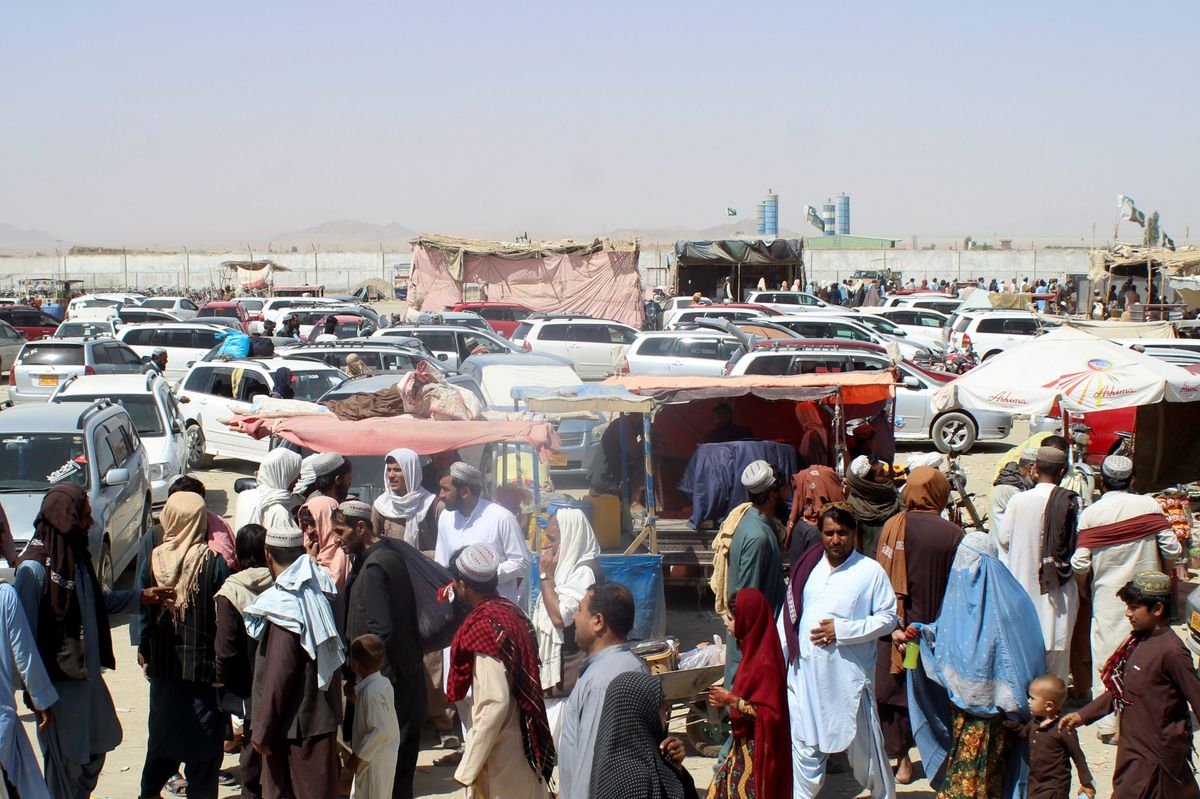How is the world handling the influx of Afghan refugee requests?

A few minutes every morning is all you need.
Stay up to date on the world's Headlines and Human Stories. It's fun, it's factual, it's fluff-free.
Afghanistan’s neighboring countries have mostly been either quiet or unreceptive to the idea of taking in large groups of refugees.
Why are Afghans seeking asylum?
- Over the past several weeks, as the United States has completed its military pull out of Afghanistan, the Taliban has taken over several major cities throughout Afghanistan, including its capital, Kabul.
- Historically, Taliban rule has meant the harsh implementation of what’s called sharia law, which means, among other things, that women would only rarely be allowed to leave the house and that certain religious and ethnic minorities would be specifically targeted.
- The Taliban has also historically targeted Afghans who helped foreign governments as interpreters or cultural liaisons. And, although it claims that those individuals aren’t being targeted, many still say they feel like they’re in danger.
- And aside from the direct threat of the Taliban, there are also humanitarian fears that the country could be headed toward food shortages and drought, along with a financial crisis that would cripple what’s left of the country’s economy.
- These fears have many Afghans trying to flee the country, but evacuations have had varying degrees of success, and different countries are handling the evacuations differently.
How are the countries bordering Afghanistan handling refugees?
- Afghanistan’s neighboring countries have mostly been either quiet or unreceptive to the idea of taking in large groups of refugees.
- Uzbekistan has completely shut its main border crossing on Afghanistan’s northern border based on national security, and not providing plans to reopen it.
- On the other hand, while China has been critical of the US withdrawal, it has remained silent on the topic of refugees.
- Pakistan, which borders Afghanistan on much of its eastern and southern border, has said that it won’t be taking any refugees, with its US ambassador telling the BBC, “We are already overburdened by the refugees, and it is beyond our capacity to host any more refugees."
- Iran has said a similar thing to Pakistan, saying it can’t support more refugees within its borders. There are some reports of people trying to cross the border into Iran, but it isn’t clear how successful they are.
- Pakistan and Iran have taken some of the largest amounts of refugees from Afghanistan in recent years, taking more than 2.2 million refugees combined in 2020.
- With that said, Tajikistan, which borders Afghanistan to the north, has pledged to take in 100,000 refugees.
What about the other countries close by?
- Some countries in Europe are promising to take in Afghan refugees numbering in the thousands.
- The United Kingdom, for example, is committing to taking 20,000 Afghan refugees over the next few years, starting with 5,000 in the first year of this program. Canada has said it would also take in around 20,000.
- And even countries in Africa, such as Uganda and North Macedonia, are taking in hundreds or even thousands of refugees from Afghanistan, at the request of the US.
- But some countries are saying they aren’t looking at taking in refugees, such as Australia, which has said that while it will look at ways of keeping people that it would’ve previously deported back to Afghanistan, it wouldn’t take in any more refugees.
- And Turkey has urged European countries to take on any refugee burden from Afghanistan, saying that it would not be “Europe’s migrant storage unit.” In 2020, Turkey took in nearly 130,000 Afghan refugees and asylum-seekers.
What about the US?
- According to Homeland Security Secretary Alejandro Mayorkas, the US is expecting to take in at least 50,000 refugees from Afghanistan.
- The vast majority of these refugees, though, will be people who helped the US military during its occupation in Afghanistan and now face massive risk from the Taliban there.
- These refugees will need to apply for what’s called a special immigrant visa (SIV), and that process can take some time. As of March, the process was about two years.
- So right now, a lot of those refugees are trying to find shelter in other countries, such as within several of the Balkan countries that have opened their doors to Afghan refugees.
- It’s largely in those countries that those Afghan refugees will try to go through the application process for their SIV. If they receive their visa, they would move to the US.
What’s next?
- It’s likely going to be messy for a while, but one of the next big steps that will be taken by the global community is to gain a better understanding of the situation.
- Right now, no one really knows for sure just how many Afghans have left the country to seek asylum elsewhere.
- But many governments aren’t interested in dealing with a massive refugee crisis like with what came in 2015 with the Syrian refugees, even if that decision receives a lot of criticism.
You drive the stories at TMS.DM us which headline you want us to explain, or email us at tips@themilsource.com







Comments ()